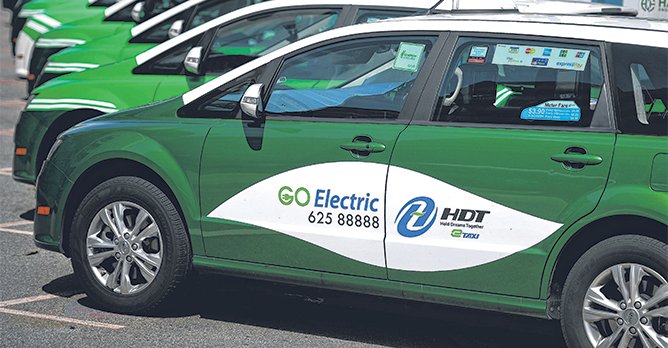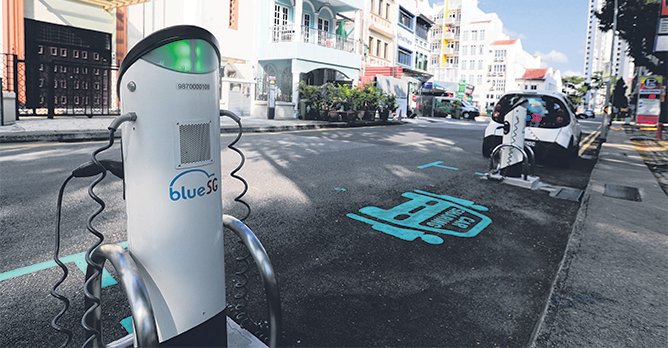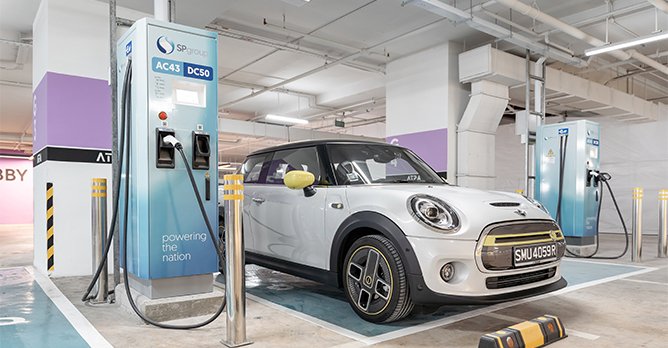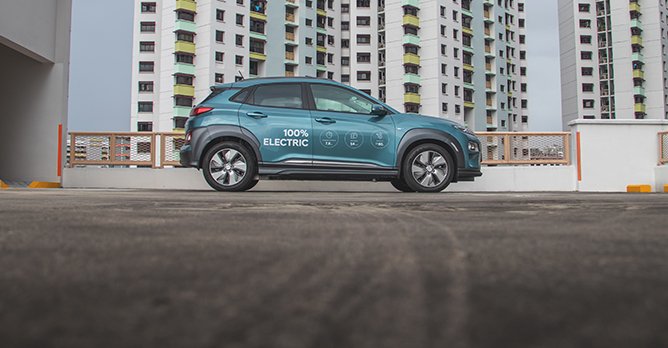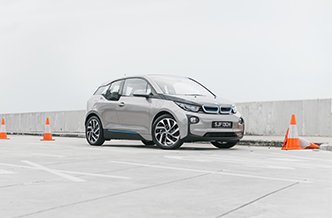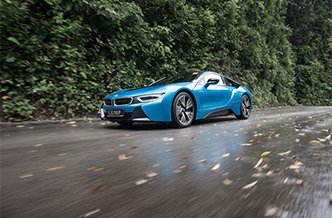SMRT's new electric taxis are more important than we may realise
16 Aug 2021|11,918 views
When news broke last Saturday about yet another batch of e-taxis arriving, it was hard not to feel the spectre of HDT's defeat lurking over SMRT's shoulders. Remember HDT? Let's do some time travel back to 2018.
Singapore was graced by its first electric taxi fleet back then when industry-newcomer, Hold Dreams Together, clinched a 10-year operating license with its hundred BYD E6s. Excitement and fanfare abounded; the company had leapfrogged even ComfortDelgro by offering not just lower, but zero-emission taxis, leaving their older, diesel-powered competitors in their own dirt and dust. With a contract to ramp its fleet up to 800 taxis by 2022, the future looked bright.
But alas, this was not to be.
COVID hit, and an unconventional full-time employment model for its drivers did HDT in when revenue plunged. Dreams crushed and taxis unplugged, it announced its exit from the industry in late 2020, citing the "debilitating impact" of the pandemic.
This, of course, was disappointing news. Was Singapore's elaborate course towards an electric vehicle (EV) future losing the wind in its sails mere moments after it had been charted?
With SMRT's recent announcement, LTA's vision of cleaner roads and greener taxis is getting another push - from a more seasoned and better-equipped industry veteran. And things are different this time. Regardless of where you stand on the spectrum from wide-eyed curiosity to complete indifference, this second stab holds more promise than meets the eye for all of us.
Fleets versus individual vehicles
A key point to note with EVs is the difference between fleets and individual purchases.
Let's chuck everything aside for a moment and just talk vehicle population numbers. A CNA report showed that more than half of a 1,000-ish EVs as of September 2019 were comprised of fleets , including BlueSG's Bluecars, Grab's Hyundai Konas, and HDT's now-scattered BYD E6s. While the EV population is steadily growing - hovering above 1,500 as of June this year - there's no arguing that cars without combustion engines are still a rare sight on Singaporean roads.
Considering this, any new purchase now already moves the needle on the EV population notably. 300 concurrent arrivals, though, gives it a proper, palpable jolt. Even though SMRT is unlikely to roll all of its new MG EV 5s out at once, the incoming shipment still guarantees a roughly 20% increase on the June numbers.
But the equation doesn't stop at the EV population size. With a 300-strong fleet, installing a few token fast-charging stations across selected Shell outlets just doesn't cut it anymore. Rather, an airtight plan to bring an entire network of chargers onboard - efficient ones too - must be enacted, so that cabbies don't waste their precious time queuing for a recharge when they could be plying the roads for passengers.
This particular point stands out in LTA's press release when it excitedly introduced HDT back in 2018: its call on the company to set up a sufficient number of charging stations island-wide to adequately support its fleet. The target was echoed by HDT itself; the company stated its awareness that its operations required significant investments in infrastructure, to which it was fully committed.
At that point, local energy utilities group, SP Group had also announced a partnership with HDT to support the charging needs of its e-taxi fleet. With SMRT, it recently made the same sort of pledge. However you slice it, there is no doubt here that HDT's venture was a stepping stone in constructing the very roadmap that will power SMRT's fleet.
Standing on the shoulders of giants
Make no mistake - SMRT's latest move is most definitely not the singular, pivotal moment on our trek towards EV adoption.
Taxi industry-leader ComfortDelgro has already started to dip its toes into EVs with a couple of full-electric Konas and Ioniqs. It is also tinkering around with charging stations - it operates a few of them in Braddell and Loyang, and entered an open tender this year to build and manage even more with French energy group, ENGIE.
Grab, on the other hand, went full out to purchase 200 Konas in 2019, in collaboration with SP Group (again) for charging support. And BlueSG pressed on through initially lukewarm reception and a slow pick-up rate to become the most prominent car-sharing company today.
However, as SMRT ups the ante now with the boldest and most visible move in the industry yet, its e-taxi fleet is special because it symbolises the explosion in recognition of the electric space by our local transport giants (and our government). Furthermore, SMRT's commitment to the clean dream is also evident in how it will peg the rental rates of the EVs lower than its Prius hybrids, to incentivise cabbies to drive them.
This conventional model of treating drivers as self-employed, on top of strong financial backing and its firm presence in the taxi industry, are all equally crucial to guaranteeing its success. With any new electric fleet that hits, infrastructural change is already to be expected; with a fleet by a big player like SMRT, it's more than a foregone conclusion.
And this is exactly where it comes to us drivers.
Back and forth: infrastructural support and societal acceptance
With the aforementioned developments, what sometimes eludes casual observation are the hidden icebergs of new possibilities - new feasibilities - for our EV-landscape.
Think of it as a trickle-down effect. If our transport giants can come together to bring infrastructure for EVs from fantasy into reality, individual drivers like us are surely next down the line in reaping the benefits. Coupled with a recently revised EV road tax (that will hopefully become more sensible with time), a Kia Niro Electric or BMW iX3 won't feel like a risky or inconvenient purchase anymore. From an attitudinal standpoint too, the pivots by our transport groups serve as subtle yet effective mechanisms of demystifying and de-alienating EVs.
When the funky, four-seater BMW i3 and its butterfly-doored sibling, the BMW i8, were launched here with their blue accents seven years back, they were irresistibly cool… but also a bit distant. Great for the environment and very desirable, sure, but playthings reserved for the rich with their private charging points. In other words - not the most effective poster children for widespread EV adoption.
Tomorrow, we'll see the nondescript MG EV 5s decked out in SMRT's brown-maroon livery, pulling up at shopping malls and HDB void-decks. And in tow behind them will be more charging points - and us, driving our very own EVs.
When news broke last Saturday about yet another batch of e-taxis arriving, it was hard not to feel the spectre of HDT's defeat lurking over SMRT's shoulders. Remember HDT? Let's do some time travel back to 2018.
Singapore was graced by its first electric taxi fleet back then when industry-newcomer, Hold Dreams Together, clinched a 10-year operating license with its hundred BYD E6s. Excitement and fanfare abounded; the company had leapfrogged even ComfortDelgro by offering not just lower, but zero-emission taxis, leaving their older, diesel-powered competitors in their own dirt and dust. With a contract to ramp its fleet up to 800 taxis by 2022, the future looked bright.
But alas, this was not to be.
COVID hit, and an unconventional full-time employment model for its drivers did HDT in when revenue plunged. Dreams crushed and taxis unplugged, it announced its exit from the industry in late 2020, citing the "debilitating impact" of the pandemic.
This, of course, was disappointing news. Was Singapore's elaborate course towards an electric vehicle (EV) future losing the wind in its sails mere moments after it had been charted?
With SMRT's recent announcement, LTA's vision of cleaner roads and greener taxis is getting another push - from a more seasoned and better-equipped industry veteran. And things are different this time. Regardless of where you stand on the spectrum from wide-eyed curiosity to complete indifference, this second stab holds more promise than meets the eye for all of us.
Fleets versus individual vehicles
A key point to note with EVs is the difference between fleets and individual purchases.
Let's chuck everything aside for a moment and just talk vehicle population numbers. A CNA report showed that more than half of a 1,000-ish EVs as of September 2019 were comprised of fleets , including BlueSG's Bluecars, Grab's Hyundai Konas, and HDT's now-scattered BYD E6s. While the EV population is steadily growing - hovering above 1,500 as of June this year - there's no arguing that cars without combustion engines are still a rare sight on Singaporean roads.
Considering this, any new purchase now already moves the needle on the EV population notably. 300 concurrent arrivals, though, gives it a proper, palpable jolt. Even though SMRT is unlikely to roll all of its new MG EV 5s out at once, the incoming shipment still guarantees a roughly 20% increase on the June numbers.
But the equation doesn't stop at the EV population size. With a 300-strong fleet, installing a few token fast-charging stations across selected Shell outlets just doesn't cut it anymore. Rather, an airtight plan to bring an entire network of chargers onboard - efficient ones too - must be enacted, so that cabbies don't waste their precious time queuing for a recharge when they could be plying the roads for passengers.
This particular point stands out in LTA's press release when it excitedly introduced HDT back in 2018: its call on the company to set up a sufficient number of charging stations island-wide to adequately support its fleet. The target was echoed by HDT itself; the company stated its awareness that its operations required significant investments in infrastructure, to which it was fully committed.
At that point, local energy utilities group, SP Group had also announced a partnership with HDT to support the charging needs of its e-taxi fleet. With SMRT, it recently made the same sort of pledge. However you slice it, there is no doubt here that HDT's venture was a stepping stone in constructing the very roadmap that will power SMRT's fleet.
Standing on the shoulders of giants
Make no mistake - SMRT's latest move is most definitely not the singular, pivotal moment on our trek towards EV adoption.
Taxi industry-leader ComfortDelgro has already started to dip its toes into EVs with a couple of full-electric Konas and Ioniqs. It is also tinkering around with charging stations - it operates a few of them in Braddell and Loyang, and entered an open tender this year to build and manage even more with French energy group, ENGIE.
Grab, on the other hand, went full out to purchase 200 Konas in 2019, in collaboration with SP Group (again) for charging support. And BlueSG pressed on through initially lukewarm reception and a slow pick-up rate to become the most prominent car-sharing company today.
However, as SMRT ups the ante now with the boldest and most visible move in the industry yet, its e-taxi fleet is special because it symbolises the explosion in recognition of the electric space by our local transport giants (and our government). Furthermore, SMRT's commitment to the clean dream is also evident in how it will peg the rental rates of the EVs lower than its Prius hybrids, to incentivise cabbies to drive them.
This conventional model of treating drivers as self-employed, on top of strong financial backing and its firm presence in the taxi industry, are all equally crucial to guaranteeing its success. With any new electric fleet that hits, infrastructural change is already to be expected; with a fleet by a big player like SMRT, it's more than a foregone conclusion.
And this is exactly where it comes to us drivers.
Back and forth: infrastructural support and societal acceptance
With the aforementioned developments, what sometimes eludes casual observation are the hidden icebergs of new possibilities - new feasibilities - for our EV-landscape.
Think of it as a trickle-down effect. If our transport giants can come together to bring infrastructure for EVs from fantasy into reality, individual drivers like us are surely next down the line in reaping the benefits. Coupled with a recently revised EV road tax (that will hopefully become more sensible with time), a Kia Niro Electric or BMW iX3 won't feel like a risky or inconvenient purchase anymore. From an attitudinal standpoint too, the pivots by our transport groups serve as subtle yet effective mechanisms of demystifying and de-alienating EVs.
When the funky, four-seater BMW i3 and its butterfly-doored sibling, the BMW i8, were launched here with their blue accents seven years back, they were irresistibly cool… but also a bit distant. Great for the environment and very desirable, sure, but playthings reserved for the rich with their private charging points. In other words - not the most effective poster children for widespread EV adoption.
Tomorrow, we'll see the nondescript MG EV 5s decked out in SMRT's brown-maroon livery, pulling up at shopping malls and HDB void-decks. And in tow behind them will be more charging points - and us, driving our very own EVs.
Thank You For Your Subscription.








